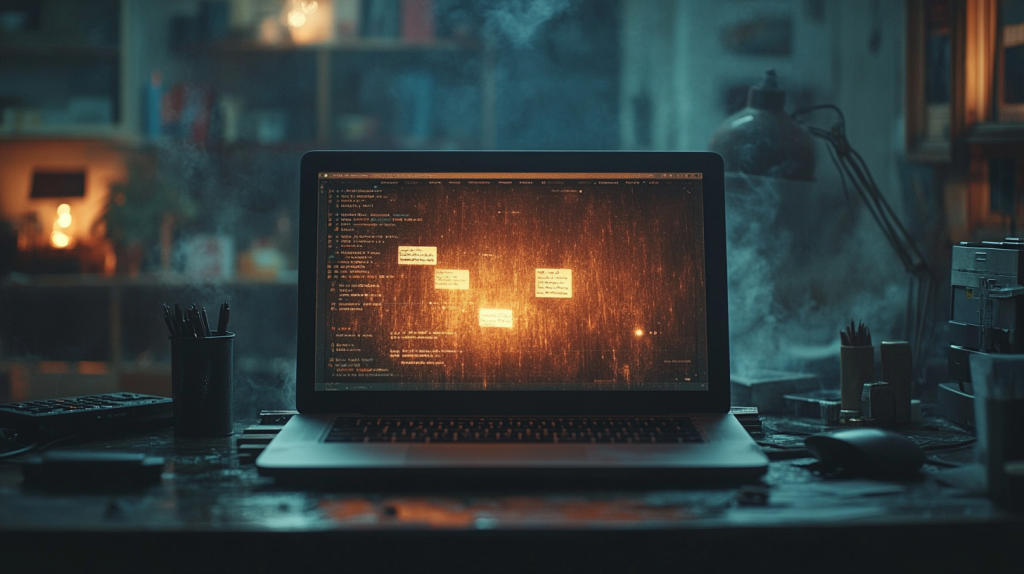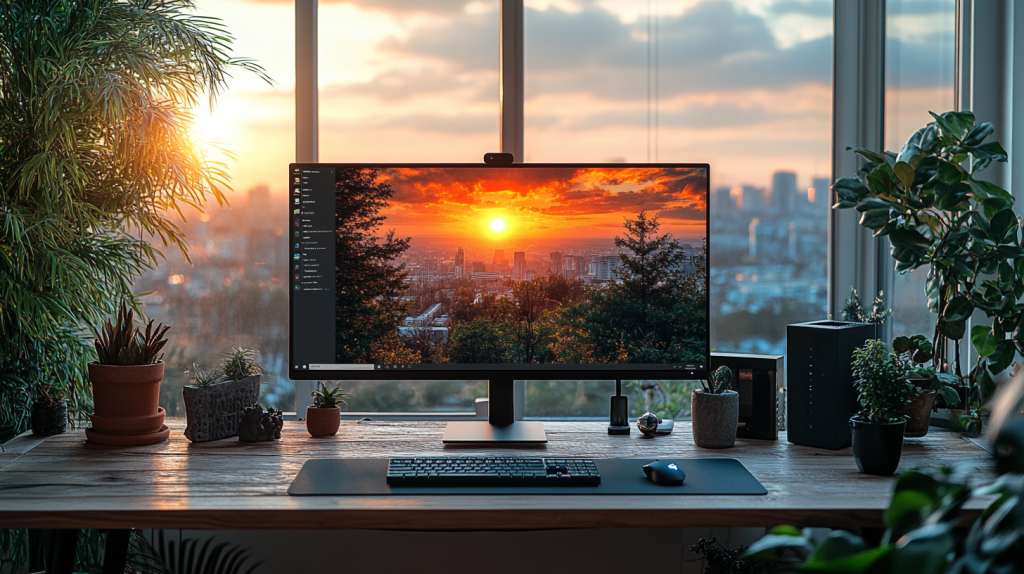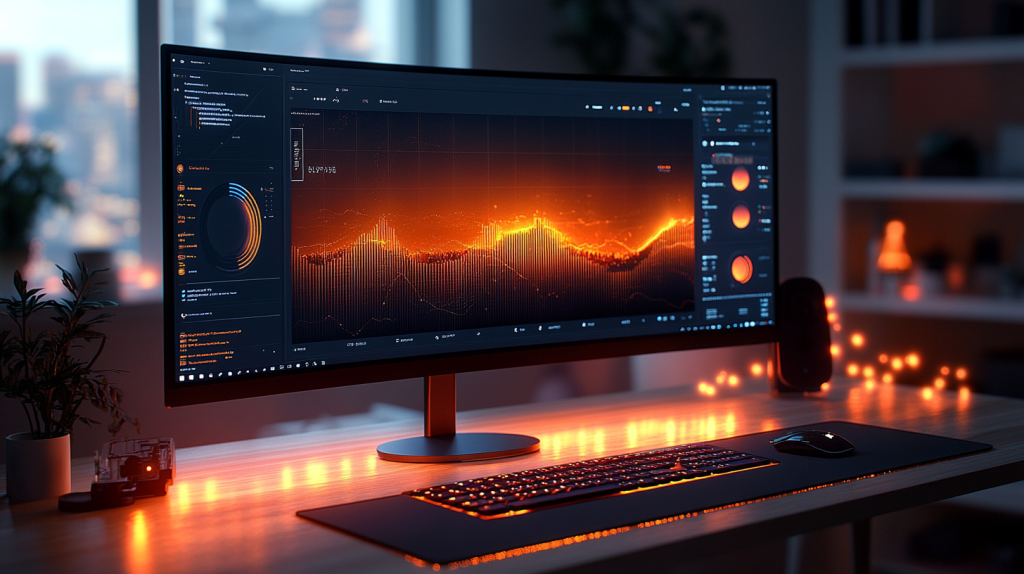Ever felt like your laptop needs a reset? You’re not alone! At Nimble Nerds, we understand that sometimes a reset is just what the doctor ordered for your trusty computer companion. Whether you’re dealing with stubborn malware, prepping your device for sale, or just craving that “new laptop” feel- we’ve got you covered. In this guide, we’ll walk you through the ins and outs of resetting your laptop – and the best part?
If you’re in Sydney and struggling with laptop issues — physical damage, performance slowdowns, or something just not working — we’re here to help. Our technicians can repair, upgrade, or optimise your device without the jargon.
Visit Our Laptop Repairs Service Page
Laptop Reset Advisor
Answer a few questions to determine the best reset option for your situation.
What’s the main issue you’re experiencing?
Have you tried basic optimization first?
Have you already tried running antivirus software?
Have you backed up all your data?
Can you still access Windows normally?
Recommended: Soft Reset
Try the “Keep my files” reset option first. This will reinstall Windows while preserving your personal files, removing only apps and settings.
Recommended: Full Reset
Use the “Remove everything” option with “Clean the drive” enabled for the most thorough cleanup. Make sure to backup your files first!
Recommended: Secure Erase
Use “Remove everything” with “Clean the drive” option, and perform this twice for maximum security before selling.
Try Optimization First
Before resetting, try Disk Cleanup, Defragmentation, and uninstalling unnecessary programs. Return here if issues persist.
Try Antivirus First
Run a full system scan with your antivirus software before considering a reset. If malware is found and removed but issues persist, return here.
Backup Required
Before proceeding, backup all important files to an external drive or cloud storage. Return here once your data is secured.
Use Recovery Environment
Boot into Windows Recovery Environment by pressing F11 during startup. Use “Reset this PC” option from there.
When Your Laptop is Crying for Help: Signs You Need to Reset PC

You know that sinking feeling when your trusty laptop starts acting up? After 15 years of helping frustrated customers, I’ve seen all the telltale signs screaming “I need a reset!” Just last week, I had a small business owner come in practically in tears because her laptop was taking 10 minutes just to open her spreadsheet files. Turns out, her device was so bogged down with temporary files and conflicting programs, it was basically throwing a digital tantrum.
Let me paint you a picture of the most common red flags I see daily. If your laptop is taking forever to boot up, or if programs are freezing faster than ice cubes in the Arctic, these software issues are classic signs your system needs a factory reset. But here’s something most people don’t realize – when your device starts making those weird clicking sounds or randomly restarts itself, it’s not always a hardware issue. In about 60% of cases I’ve handled, a proper reset resolved these seemingly serious problems.
The most reliable indicator I’ve found is when your system becomes slower over time, despite your best efforts to delete some personal files to free up space. If you’ve noticed your once-zippy computer now struggles with basic tasks like opening browsers or switching between programs and apps, it’s probably time for a factory reset. And let’s not forget about those mysterious error messages that pop up on the screen like uninvited guests at a party – they’re often your desktop or laptop’s way of waving a white flag.
When all these happen, it may be time to restart your laptop. Factory resetting your laptop not only refreshes its performance but will also troubleshoot and fix disruptive software issues with your operating system.
Backup Basics: Don’t Let Your Digital Life Disappear

In my years as a tech specialist, I’ve seen too many heartbroken faces after people lost precious personal files and important documents during a reset. There was this one customer – who thought he’d backed up everything before factory resetting his PC, only to realize after the reset that three years of family photos were gone. Trust me, that’s not a conversation I ever want to have again.
Here’s my tried-and-true pre-reset checklist for recovery options that I’ve refined over thousands of service calls. First, plug in your laptop and grab an external hard drive or sign up for cloud storage. For my customers who work with lots of data (looking at you, photographers and small business owners), I recommend both. Windows recovery environment tools are great for basic needs, but I’ve found that manually copying your most important folders before a factory reset to an external drive gives you that extra peace of mind. Pro tip: Don’t forget to check your Downloads folder – I can’t tell you how many times people forget about important files lurking there.
Software Inventory: The Laptop Reset Hero

This is where things get interesting, and where I’ve saved countless hours of post-reset headaches. Take screenshots of your installed programs and settings (Control Panel > Programs and Features), and write down or screenshot any product keys you have. I keep a dedicated notebook for my clients’ license keys because I’ve learned the hard way that email searches for old software keys at 9 PM aren’t fun. Quick tip: tools like Belarc Advisor can help you find product keys, but jot them down before running any reset!
Browser Bookmarks: Your Digital Memory Lane

Remember to export your browser bookmarks and saved passwords. I had a small business client who thought she’d memorized all her important website logins, but she hadn’t. Modern browsers make this pretty straightforward: in Chrome, just hit Ctrl+Shift+B, and you can see and export everything. While you’re at it, save any custom browser settings or extensions you use regularly. I’ve created a simple text file template that I’m happy to share – it’s saved me (and my clients) countless hours of post-reset setup time.
The Moment of Truth: Executing Your Laptop Reset
Let me tell you about the safest way to reset your Windows OS laptop – a method I’ve refined after helping everyone from anxious grandparents to rushed business executives. The best part? You don’t need to be a tech wizard to follow along. I once guided a 78-year-old retired teacher through this process over the phone, and she absolutely nailed it.
First up, plug in your laptop. Then, type “reset” into your Windows search bar and click “Reset this PC.” Windows is actually pretty smart about this now, much better than the old days when we had to juggle recovery disks like a circus performer. You’ll see two main options: “Keep my files” and “Remove everything.” If you’re just trying to speed things up, “Keep my files” is your friend. But here’s a pro tip I share with all my customers – if you’ve already backed up your files and want the most thorough clean slate possible, “Remove everything” is the way to go.
Cloud Download vs. Local Reinstall: The New Kid on the Block

Currently, Windows offers a cloud download option for reset. Think of it as getting a fresh copy of Windows straight from Microsoft’s servers, rather than using potentially corrupted local files. I started recommending this option after seeing how many issues it resolved for my clients who had mysterious software glitches. The only catch? Make sure you’ve got a stable internet connection and some time to spare – we’re talking about downloading several gigabytes of data.
When Things Go Sideways: Windows Recovery Environment

Sometimes (about 15% of the time in my experience), the normal factory reset process hits a snag. Don’t panic! If this happens, restart your laptop and press F11 (or sometimes F8) repeatedly as it boots up. This gets you into Windows Recovery Environment – think of it as your laptop’s emergency room. From here, you can access the same reset options, just through a different door. I’ve lost count of how many times this backup method has saved the day for my clients.
Steps on How to Reset PC or Laptop

Step 1: Prepare for the Reset

Before you begin, it is important for you to properly back up important files from your computer device. This is done because a factory reset will wipe your computer operating system slate clean- delete all your personal files, installed apps and settings. So by making sure your files are saved in a drive or cloud storage, nothing important is lost during the reset.
Step 2: Open the Settings Menu

-
- Click the Start menu in the bottom-left corner.
-
- Tap Settings app to open the main Windows settings.
Step 3: Choose Your Recovery Options
-
- After clicking Settings, click on Update & Security.
-
- From the left-hand menu, choose Recovery to access your laptop’s factory reset options.
Step 4: Start the Factory Reset Process

Under the section labeled Reset this PC, click Get started. You’ll have two options to choose from:
-
- Keep my files – This will only remove apps and settings but will keep your personal files for you.
-
- Remove everything – This option deletes all local and personal files, installed apps, and settings for a complete, fresh install of Windows.
You can choose what option best suits you depending on your current needs.
Step 5: Choose Reinstall Windows Type

Afterwards, you will have to choose between Cloud Download or Local Reinstall on how you wish to reinstall Windows. These two differ as Cloud download will download the operating system files from Microsoft’s servers, which is good if your current OS is corrupted. Meanwhile, local reinstall uses files that are already on your laptop to reset your Windows in a typically faster way.
Step 6: Confirm and Start the Factory Reset
-
- Make sure to review the options Windows displays based on your choices.
-
- When ready, click Reset to begin the process. Your laptop will restart and start reinstalling Windows to restore factory settings.

Welcome Back: Your Post-Reset Survival Guide
After thousands of laptop resets, I’ve learned that what you do in the first hour after you factory reset your PC and operating system is just as important as the factory reset itself. Picture this: your laptop’s running like a dream, everything’s fresh and clean, and then… Windows Update hits you with 147 pending updates. Deep breaths – I’ve got a battle-tested game plan that’ll get you back up and running smoothly.
Firstly, let’s tackle those apps and settings updates. I always tell my clients to resist the urge to start reinstalling their favorite apps right away. Instead, reinstall Windows Update and let it do its thing. Pro tip: do this over lunch break – I’ve found it typically takes about 45-60 minutes to reinstall settings app in Windows and get it fully updated. Trust me, this step saves you from that frustrating “update required” message just when you’re in the middle of something important later.

Driver Detective Work: Getting Your Hardware Happy
Here’s where things get interesting – and where I see most DIY resetters stumble. Your laptop might feel nippy, but check Device Manager (right-click Start > Device Manager) for any yellow exclamation marks. These are basically your hardware components waving their hands saying, “Hey, I don’t have the right driver!” The Windows generic drivers you installed might work okay, but for optimal performance, you’ll want the real deal. I keep a handy bookmark folder of major manufacturer driver pages (Dell, HP, Lenovo, etc.) because hunting for drivers shouldn’t feel like solving a mystery novel.

The Smart Ways to Restore Preinstalled Apps and Settings
Now, here’s a secret that took me years to perfect: don’t reinstall all your files and all your apps at once. Start with your security software (antivirus, etc.) and deleted essential work tools. I maintain a priority list for my clients:
-
- Security software (let’s keep that fresh Windows install protected)
-
- Work-critical applications ( for example, Office suite, Zoom, etc.)
-
- Browsers and essential extensions (i.e user accounts)
-
- Everything else (personal files and data)
Remember those screenshots of your old programs? Use them as a checklist, but think twice before you restore apps you really don’t need. I had a client who went from a sluggish mess to lightning-fast just by being selective about what made it back onto their fresh system.

Maintaining Your Laptop’s Fresh Operating System
After countless customers returning with the same issues months later, I’ve developed what I like to call the “Clean Car Theory.” You know how you drive extra carefully right after washing your car? Apply that same mindset to your laptop after a factory reset. I once had a client who followed this maintenance plan religiously, and two years later, their laptop was still running almost as smoothly as day one.
Let me share my real-world-tested maintenance routine that’s saved numerous laptops from premature resets. Schedule a monthly “health check” – think of it as a digital oil change. Use built-in tools like Disk Cleanup (not just the basic version – click that “Clean up system files” button too) and Disk Defragmenter. Fun fact: solid-state drives (SSDs) don’t need defragging, but it’s still good to optimize them using Windows’ built-in tools. I’ve seen this simple routine add years to a laptop’s useful life.

The Storage Sweet Spot: Keeping Your Drive Happy
Here’s something most people don’t realize – your laptop needs breathing room. I always tell my clients to keep at least 20% of their drive space free. Think of it like trying to work at a cluttered desk versus a clean one. Windows needs that extra space to work efficiently, create temporary files, and manage updates. I’ve rescued countless laptops that were suffocating under 98% capacity, and the performance difference after clearing space is like night and day.

Software Savvy: The Art of Clean Computing
The biggest favor you can do for your laptop? Be picky about what you install and reinstall. I’ve developed a simple rule for my clients: if you haven’t used a program in three months, it’s probably time to uninstall it. Also, avoid those tempting “speed up your PC” programs – in my experience, they often cause more problems than they solve. Instead, use Windows’ built-in Task Manager to keep an eye on what’s hogging your resources. Press Ctrl+Shift+Esc, click “More details,” and you’ve got all the information you need right there.

Final Words: Your Laptop’s Second Chance at Life
After helping thousands of customers through the reset process, I can tell you one thing with certainty – a factory reset isn’t just about fixing problems, it’s about giving your laptop (and yourself) a fresh start. I’ve seen the relief on people’s faces when their device springs back to life, running like it did when they first bought it. Just last month, I helped a local artist recover her “dying” laptop through a factory reset, saving her from spending $1,000 on a new device. Her reaction? Priceless.
Remember, though, that a factory reset isn’t a magic bullet. Think of it like going to the gym – it’s not just about that one intense workout (the reset), but also about maintaining healthy habits afterwards. The maintenance tips I’ve shared aren’t just theoretical – they’re battle-tested strategies that have helped my clients keep their laptops running smoothly for years.

Frequently Asked Questions
From my experience helping hundreds of customers, the most foolproof way to restore everything is through Windows Settings > System > Recovery > Reset this PC. Choose “Remove everything” for the most thorough clean. Always backup your files first – I’ve seen too many tears over lost family photos to not emphasize this point.
Absolutely! I recommend it annually for heavy users. It’s like spring cleaning for your computer. Just ensure you’ve backed up your data and have your software licenses handy. I’ve seen laptops go from barely usable to lightning-fast after a proper reset.

If you’re locked out, you can still reset by restarting your laptop and pressing F11 (or sometimes F8) repeatedly during startup to access Recovery Mode. From there, you can reset your system settings without needing the Windows password. I’ve helped numerous panicked clients through this process remotely.
One way to do this is also by pressing and holding the Shift key while selecting the Power button and then the restart. When the ‘Please Wait” screen appears, release the Shift key. Follow the prompts by clicking “Reset this PC”, and choosing between “Keep my files” or “Remove everything”. Finally, choose a way to reinstall Windows.

Always use the “Remove everything” option and select “Clean the drive” when prompted. This takes longer but ensures your personal data isn’t recoverable. I recommend doing this twice for extra security – a practice I’ve used successfully with hundreds of clients preparing their devices for sale.

If you’re in Sydney and struggling with laptop issues — physical damage, performance slowdowns, or something just not working — we’re here to help. Our technicians can repair, upgrade, or optimise your device without the jargon.
Visit Our Laptop Repairs Service Page



















